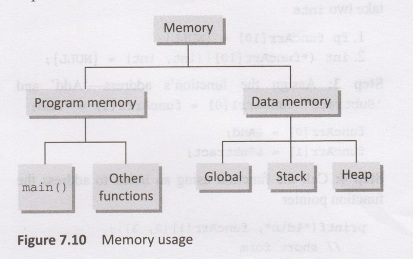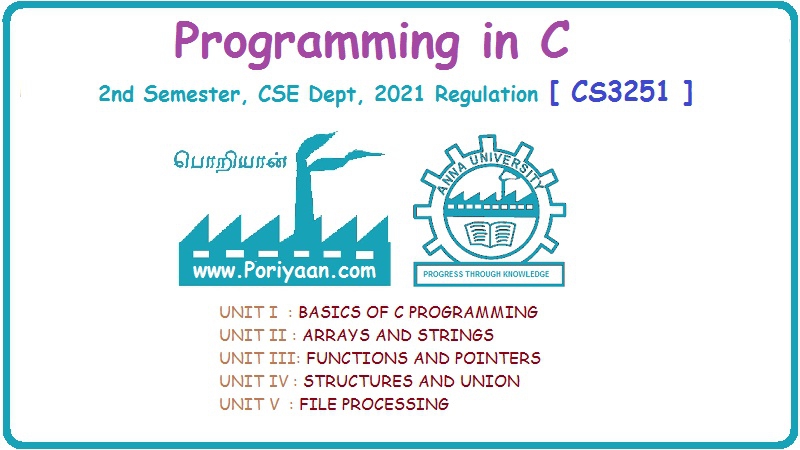Programming in C: Unit III (b): Pointers
Memory Usage
Programming in C
Before jumping into dynamic memory allocation, let us first understand how memory is used. Conceptually, memory is divided into two-program memory and data memory
MEMORY
USAGE
Before
jumping into dynamic memory allocation, let us first understand how memory is
used. Conceptually, memory is divided into two-program memory and data memory
(Figure 7.10).
The
program memory consists of memory used for the main () and other called
functions in the program, whereas data memory consists of memory needed for
permanent definitions such as global data, local data, constants, and dynamic
memory data. The way in which c handles the memory requirements is a function
of the operating system and the compiler.
When
a program is being executed, its main () and
all other functions are always kept in the memory. However, the local variables
of the function are available in the memory only when they are active. When we
studied recursive functions, we have seen that the system stack is used to
store a single copy of the function and multiple copies of the local variables.

Apart
from the stack, we also have a memory allocation known as heap. Heap memory is
unused memory allocated to the program and available to be assigned during its
execution. When we dynamically allocate memory for variables, heap acts as a
memory pool from which memory is allocated to those variables.
However,
this is just a conceptual view of memory and implementation of the memory is
entirely in the hands of system designers.
Programming in C: Unit III (b): Pointers : Tag: : Programming in C - Memory Usage
Related Topics
Related Subjects
Programming in C
CS3251 2nd Semester CSE Dept 2021 | Regulation | 2nd Semester CSE Dept 2021 Regulation
